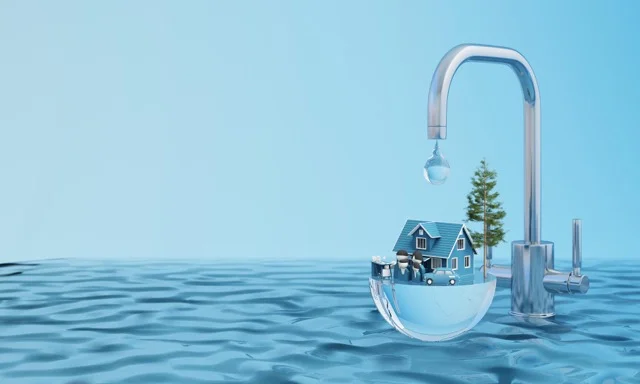10 Easy Facts About Reclaim Waste Described
10 Easy Facts About Reclaim Waste Described
Blog Article
The Ultimate Guide To Reclaim Waste
Table of ContentsThings about Reclaim WasteThe Best Strategy To Use For Reclaim WasteIndicators on Reclaim Waste You Should KnowThe Best Strategy To Use For Reclaim WasteSome Known Details About Reclaim Waste
Residential sewer waste refers to the waste and items from a residential septic storage tank. The appropriate monitoring and disposal of domestic sewer waste call for liquid waste to be transferred to a sewer therapy plant where the proper approaches and tools are used to cleanse and dispose of waste.
Business waste commonly consists of possible dangers, such as combustible materials or a mix of fluid and strong waste items, and requires an advanced and detailed disposal process. The disposal of business waste normally includes the filtration of waste prior to transportation to make certain risk-free and proper disposal. Hazardous waste is developed from by-products and overflow of industrial processes and manufacturing.
This type of waste can not make use of the exact same sewer administration transportation or procedures as septic or commercial fluids. The hazardous waste management process requires the inspection and screening of liquid waste prior to it undertakes the disposal procedure (liquid waste removal melbourne). Drainage waste is the liquid waste that originates from runoff and excess stormwater in very populated locations or cities
Overflow waste can create contamination and flooding if not dealt with effectively. Find out more concerning sewer cleansing and waste monitoring. Making certain correct waste monitoring can prevent catastrophes and reduce environmental injury. Both people in household settings and professionals in commercial or production sectors can gain from comprehending the processes and guidelines of liquid waste administration.
The Facts About Reclaim Waste Uncovered
Call PROS Services today to discover concerning our waste monitoring and disposal solutions and the correct means to care for the liquid waste you create.
(https://filesharingtalk.com/members/604691-reclaimwaste1)Do you know what occurs to your water when you disengage, purge the commode or drain the washing maker? No? Well, it's worth understanding. This supposed 'wastewater' is not only a vital resource but, after therapy, will be released to our land, waterways or the sea. Made use of water from bathrooms, showers, bathrooms, cooking area sinks, laundries and commercial procedures is called wastewater.

water utilized to cool equipment or tidy plant and devices). Stormwater, a kind of wastewater, is runoff that flows from farming and urban areas such as roofs, parks, gardens, roads, courses and gutters into stormwater drains pipes, after rain. Stormwater streams without treatment straight to neighborhood creeks or rivers, at some point reaching the ocean.
Not known Factual Statements About Reclaim Waste
In Queensland, many wastewater is dealt with at sewage therapy plants. Wastewater is transported from residential or industrial websites with a system of sewage systems and pump terminals, known as sewage reticulation, to a sewage treatment plant.
The Division of Natural Resources encourages local federal governments about managing, operating and keeping sewerage systems and therapy plants. In unsewered areas, city governments might call for homeowners to set up private or home sewer therapy systems to treat residential wastewater from toilets, cooking areas, restrooms and laundries. The Division of Natural Resources authorises the use of house systems when they are verified to be effective.
In some new communities, treatment of some stormwater to eliminate litter, sand and crushed rock has actually started using gross toxin traps. Wastewater therapy occurs in 4 phases: Removes strong issue.
Wastewater then moves right into large containers where solids settle and are eliminated as sludge. Oil and scum are skimmed from the surface area. Uses small living microorganisms called micro-organisms to damage down and get rid of remaining liquified wastes and great particles. Micro-organisms and wastes are included in the sludge. Removes nitrogen and phosphorus nutrients that might create algal blooms in our waterways and intimidate aquatic life.
The Best Strategy To Use For Reclaim Waste
Nutrient elimination is not offered at all sewer therapy plants since it calls for expensive specialised tools. Clear liquid effluent generated after therapy might still include disease-causing micro-organisms - liquid waste disposal.

This normally implies wastewater has to be dealt with or pollutants removed prior to it can be discharged to waterways. Most wastewater moves into the sewage system. Under the Act, regional governments carry out authorizations and licences for eco appropriate activities (Periods) including wastewater releases that might have a local effect. The department carries out authorizations and permits to Periods entailing wastewater releases that may have a local or statewide influence.
The Greatest Guide To Reclaim Waste
Tracking gives valid details concerning water top quality and can validate that permit problems are being satisfied. The info acquired through monitoring offers address the basis for making water quality decisions.
Report this page